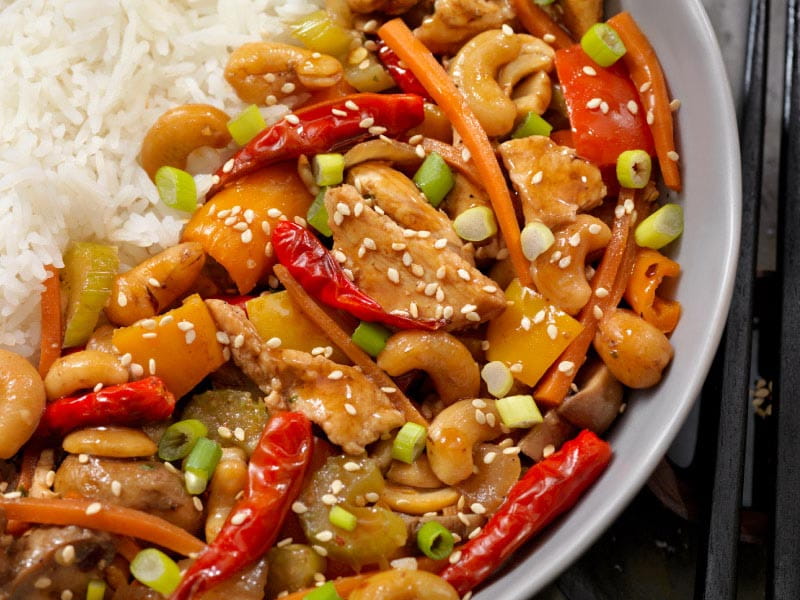
Eating a modified version of traditional Chinese food containing half the amount of sodium may significantly lower blood pressure for Chinese adults in just a few weeks, new research shows.
Published Monday in the American Heart Association journal Circulation, the study found that altering traditional Chinese cuisine to also reduce fat intake, double dietary fiber and increase protein, carbohydrates and potassium helped people with high blood pressure bring down both systolic (the top number) and diastolic (the bottom number) levels over a four-week period.
The modified Chinese food diet was modeled after the heart-healthy Dietary Approaches to Stop Hypertension (DASH) diet. Eating an unhealthy diet, especially one high in sodium, is considered a modifiable risk factor for high blood pressure, also known as hypertension. High blood pressure is a major risk factor for cardiovascular disease, which has increased rapidly in China in recent decades due in large part to unhealthy dietary changes, such as eating fewer grains, legumes and vegetables and dramatically more meat, eggs and oils.
“Chinese people who live in the U.S. and elsewhere often maintain a traditional Chinese diet, which is very different from a Western diet,” study team co-chair Dr. Yangfeng Wu said in a news release. Wu is a professor at Peking University Clinical Research Institute in Beijing. “Healthy Western diets such as DASH and Mediterranean have been developed and proven to help lower blood pressure. However, until now, there has not been a proven heart-healthy diet developed to fit into traditional Chinese cuisine.”
More than one-fifth of the world’s population eats Chinese food regularly. The findings suggest that if the heart-healthier diet were sustained, it could reduce major cardiovascular disease by 20%, heart failure by 28% and death from any cause by 13%.
In the study, 265 Chinese adults with high blood pressure were randomly assigned to eat a diet that matched their regular eating style or a modified, heart-healthy version of their traditional Cantonese, Szechuan, Shandong or Huaiyang cuisine for 28 days.
Eating the heart-healthy diets lowered participants’ calories from fat by 11%, increased calorie intake from carbohydrates by 8% and increased calories from protein by 4%. Fiber, potassium, magnesium and calcium intake increased in the group eating the modified cuisines, while sodium decreased by half – from nearly 6,000 milligrams daily to about 3,000.
Blood pressure was measured before and after the study period and once a week while participants ate the assigned diets. Although blood pressure declined in both groups, participants who ate heart-healthy versions of their traditional diets saw much bigger declines. Their systolic blood pressure fell by an extra 10 mmHg on average compared with the control group; diastolic blood pressure dropped nearly an extra 4 mmHg. Results were comparable across the four regional styles of cuisine.
The cost of preparing the modified version of the diets was equivalent to 60 cents per day in U.S. dollars, which the researchers said was considered affordable. They also reported that flavor and taste in the modified diet were comparable to the traditional meals and that participants ate similar amounts of food.
“Health professionals should recommend a heart-healthy diet with low sodium and high potassium, fiber, vegetables and fruits as the first-line treatment to their patients with high blood pressure,” Wu said. “Because traditional Chinese dietary culture and cooking methods are often used wherever Chinese people live, I believe a heart-healthy Chinese diet and the principles that we used for developing the diet would be helpful for Chinese Americans as well.”
If you have questions or comments about this American Heart Association News story, please email [email protected].



